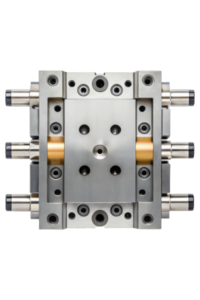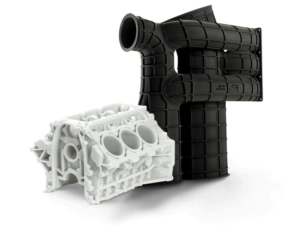In the dynamic landscape of contemporary business, companies launch a multitude of products annually to capture attention and maintain competitiveness. A pivotal tool in this endeavor is the prototype – a tangible representation of the upcoming products. Rapid prototyping, a cutting-edge technique, plays a crucial role in executing seamless fabrication processes.
Harnessing the Power of Digital Designs in Rapid Prototyping
Rapid prototyping operates on the bedrock of digital 3D designs, a process more commonly recognized as 3D printing. This technique, often synonymous with additive manufacturing, proves instrumental in realizing intricate and ambitious designs, particularly those involving polymer-based models. By engendering prototypes, rapid prototyping offers a platform for comprehensively evaluating various components.
A Prototype’s Significance in the Product Designing Realm
A prototype serves as the embryonic version of the final product, providing a tangible glimpse into the anticipated end result. As an indispensable facet of the product design journey, prototypes offer insights into the form and function of the ultimate creation. Thus, they significantly contribute to the process of developing novel products.
Navigating the Rapid Prototyping Process: A Concise Overview
To embark on the journey of rapid prototyping, an understanding of its intricacies is imperative. Essential factors such as cost, time, speed, and fidelity level must be considered to ensure the procedure’s optimal execution. Rapid prototyping employs diverse manufacturing technologies, with layered additive manufacturing – including processes such as casting, molding, extruding, and high-speed machining – emerging as one of the most advanced techniques.
Diverse Processes in Prototype Creation
Beyond additive manufacturing, various methodologies facilitate prototype development:
- Compressive Process: This involves shaping semi-solid or liquid materials, often preceding casting or molding processes.
- Subtractive Process: Material is carved to achieve the desired shape, often necessitating considerable force.
These processes collectively offer a comprehensive understanding of prototype creation methods.
Exploring the Nuances of Rapid Prototyping Techniques
Delving deeper into the realm of rapid prototyping, specific techniques come to the fore:
- Selective Laser Sintering (SLS): SLS fabricates functional sections using polymer powder, yielding parts with commendable tensile strength, though porosity might lead to brittleness. It boasts high productivity and cost-effectiveness.
- Fused Deposition Modeling (FDM): A modern technique involving thermoplastic resins, FDM results in durable 3D parts, even for intricate designs.
- Binder Jetting: Ideal for metals and plastics, binder jetting employs a binding agent on powder beds, gradually solidifying to form 3D prototypes.
- Multi Jet Fusion (MJF): This method fuses powdered material with a fusing agent, using heat to create accurate and rigid prototypes, suitable for both regular and flexible parts.
Understanding the Importance of Rapid Prototyping
In the relentless pursuit of innovation, companies continually introduce new products to remain at the vanguard. In this landscape, rapid prototyping becomes a linchpin, facilitating swifter product development by aiding in design validation and verification. This accelerates the path to product finalization and aligns with contemporary business imperatives.
Varieties of Rapid Prototypes
The landscape of rapid prototypes encompasses two primary categories:
- High-Fidelity Prototype: Resembling the final product both in appearance and function.
- Low-Fidelity Prototype: A simplified version, rapidly produced to demonstrate key concepts.
These distinctions illuminate the spectrum of options available for efficient prototype development.
Advantages of Embracing Rapid Prototyping
Anticipating the journey ahead, it is vital to comprehend the benefits:
- Facilitating Functional Testing: Iterative testing guides flawless product development, refining features and eradicating errors.
- Mitigating Product Failure Risks: In-depth evaluation enabled by prototypes uncovers and rectifies issues, ensuring a successful product launch.
- Optimizing Development Costs: Early-stage prototype deployment enhances cost-effectiveness, yielding substantial savings and amplified returns on investment.
Seizing Opportunities with Quickparts
At Quickparts, a nexus of expertise and technology, rapid prototyping finds its ultimate expression. Our seasoned engineers harness diverse methodologies, adeptly implementing the intricacies of prototyping techniques. This synergy ensures your product development journey is enriched by precision and expedited by knowledge. As you engage with us, you’ll glean insights into the transformative potential of prototypes, solidifying your position at the forefront of innovation and product excellence.


